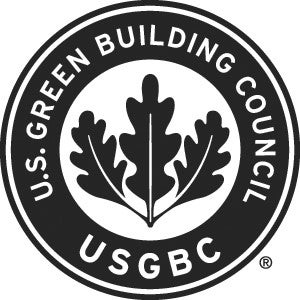The Energy and Atmosphere (EA) category is about designing a building that uses as little energy as possible through conservation, efficiency, and the use of alternative renewable energy sources. The new Arthur Weisberg Family Applied Engineering Complex (AEC) uses 24% less energy than other buildings its size. Constructing an energy efficient building takes great effort, and it begins with aspects such as the way the building is positioned on the property, and the glazing that is used on mechanical structures used to heat and cool the building. The AEC building went through a process called “Enhanced Commission” which helps to prevent long-term maintenance issues and wasted energy by verifying that the design of the building meets the owner’s project requirements and functions as intended.
Learn more about USGBC Energy and Atmosphere (EA)
 Below is a chart of points for Marshall University’s new Arthur Weisberg Family Applied Engineering Complex (AEC), currently awaiting response from the US Green Building Council (USGBC).
Below is a chart of points for Marshall University’s new Arthur Weisberg Family Applied Engineering Complex (AEC), currently awaiting response from the US Green Building Council (USGBC).
| 9 | 0 | 26 | ENERGY & ATMOSPHERE (EA) | Possible Points: | 35 | |||||
| Y | ? | N | ||||||||
| Y | C | Prereq 1 | Fundamental Commissioning of Building Energy Systems | |||||||
| Y | d | Prereq 2 | Minimum Energy Performance | |||||||
| Y | d | Prereq 3 | Fundamental Refrigerant Management | |||||||
| 7 | 12 | d | Credit 1 | Optimize Energy Performance | 1 to 19 | |||||
| Improve by 12% for New Buildings or 8% for Existing Building Renovations | 1 | |||||||||
| Improve by 14% for New Buildings or 10% for Existing Building Renovations | 2 | |||||||||
| Improve by 16% for New Buildings or 12% for Existing Building Renovations | 3 | |||||||||
| Improve by 18% for New Buildings or 14% for Existing Building Renovations | 4 | |||||||||
| Improve by 20% for New Buildings or 16% for Existing Building Renovations | 5 | |||||||||
| Improve by 22% for New Buildings or 18% for Existing Building Renovations | 6 | |||||||||
| X | Improve by 24% for New Buildings or 20% for Existing Building Renovations | 7 | ||||||||
| Improve by 26% for New Buildings or 22% for Existing Building Renovations | 8 | |||||||||
| Improve by 28% for New Buildings or 24% for Existing Building Renovations | 9 | |||||||||
| Improve by 30% for New Buildings or 26% for Existing Building Renovations | 10 | |||||||||
| Improve by 32% for New Buildings or 28% for Existing Building Renovations | 11 | |||||||||
| Improve by 34% for New Buildings or 30% for Existing Building Renovations | 12 | |||||||||
| Improve by 36% for New Buildings or 32% for Existing Building Renovations | 13 | |||||||||
| Improve by 38% for New Buildings or 34% for Existing Building Renovations | 14 | |||||||||
| Improve by 40% for New Buildings or 36% for Existing Building Renovations | 15 | |||||||||
| Improve by 42% for New Buildings or 38% for Existing Building Renovations | 16 | |||||||||
| Improve by 44% for New Buildings or 40% for Existing Building Renovations | 17 | |||||||||
| Improve by 46% for New Buildings or 42% for Existing Building Renovations | 18 | |||||||||
| Improve by 48%+ for New Buildings or 44%+ for Existing Building Renovations | 19 | |||||||||
| 7 | d | Credit 2 | On-Site Renewable Energy | 1 to 7 | ||||||
| 1% Renewable Energy | 1 | |||||||||
| 3% Renewable Energy | 2 | |||||||||
| 5% Renewable Energy | 3 | |||||||||
| 7% Renewable Energy | 4 | |||||||||
| 9% Renewable Energy | 5 | |||||||||
| 11% Renewable Energy | 6 | |||||||||
| 13% Renewable Energy | 7 | |||||||||
| EX PT: 15% for a total of 8 points | ||||||||||
| 2 | C | Credit 3 | Enhanced Commissioning | 2 | ||||||
| 2 | d | Credit 4 | Enhanced Refrigerant Management | 2 | ||||||
| 3 | C | Credit 5 | Measurement and Verification | 3 | ||||||
| 2 | C | Credit 6 | Green Power | 2 | ||||||
| EX PT: Purchase 100% to get ex pt | ||||||||||